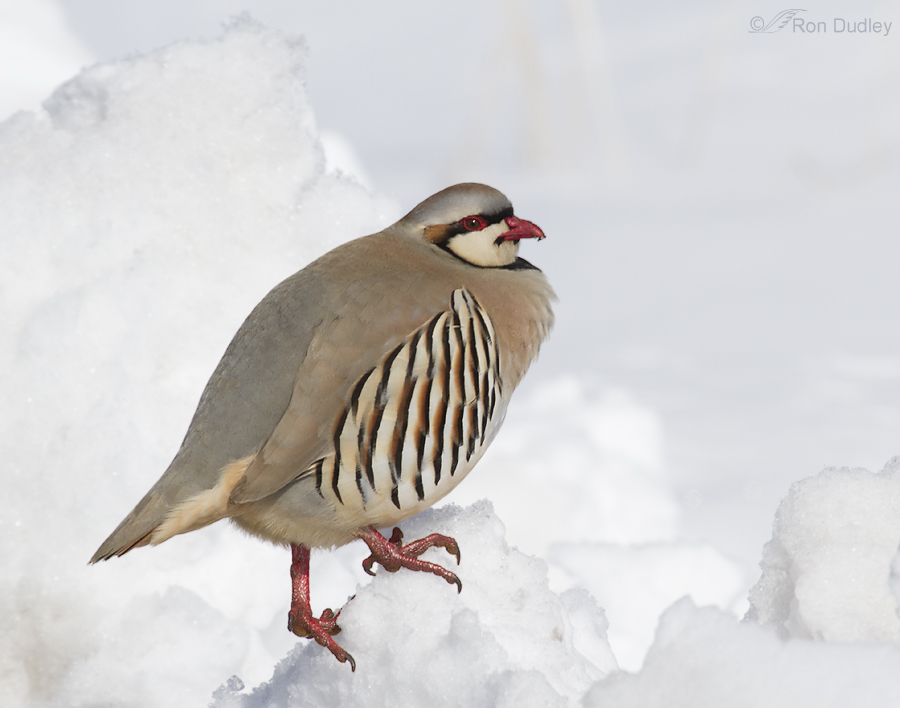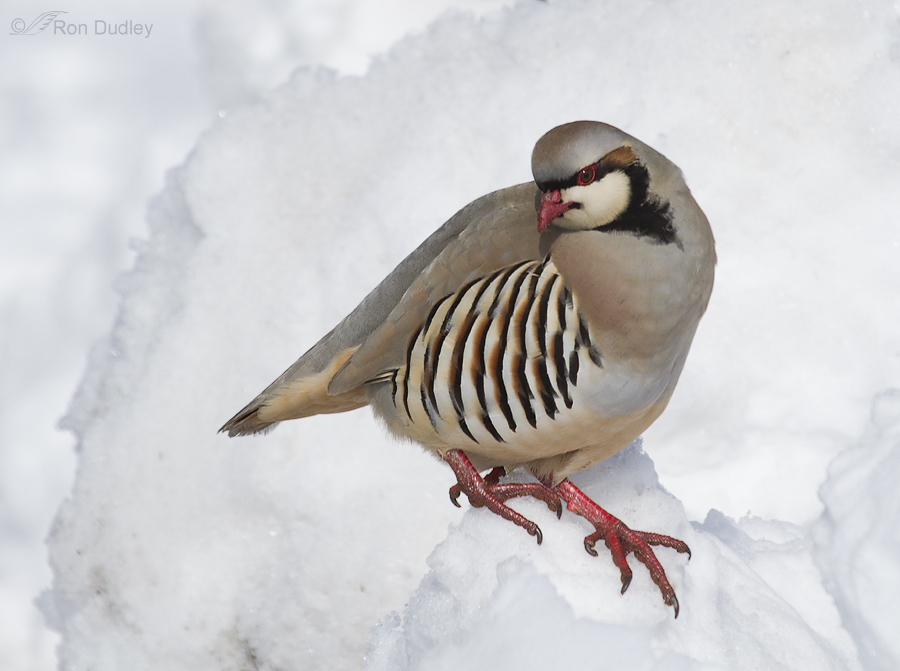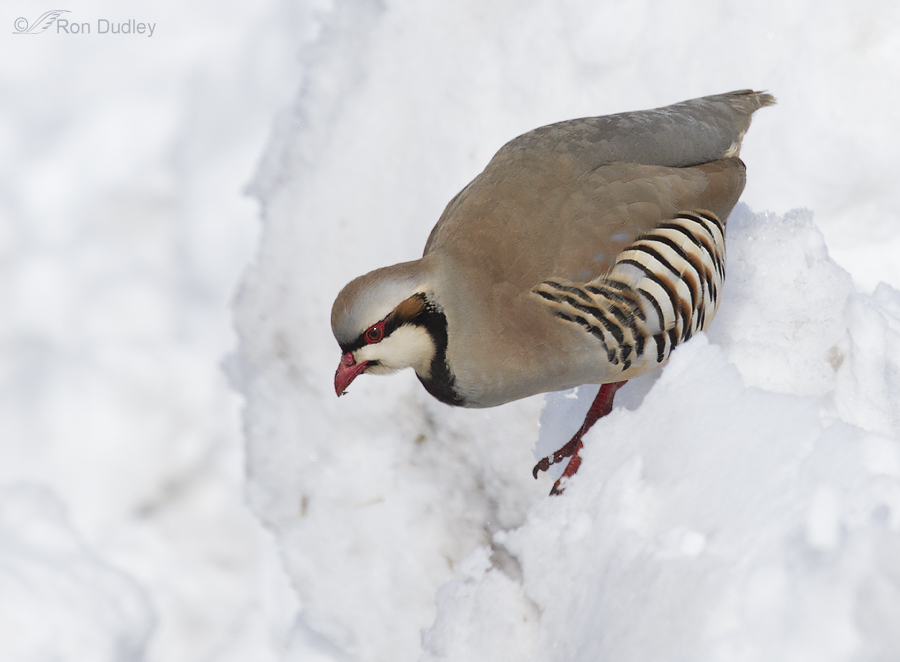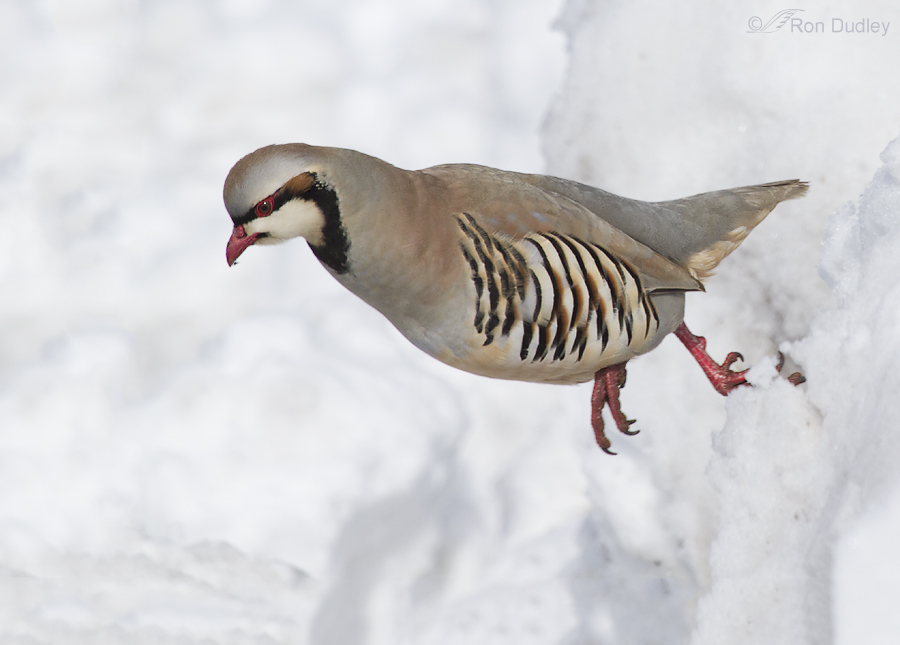Chukars typically forage in small flocks and when they do one of them often sits on an elevated perch and serves as a sentry while the others are looking for food.

1/2500, f/8, ISO 500, 100-400 @ 400mm, natural light
This bird chose a pile of snow that had been pushed up high by a snow plow along the edge of a road.

1/3200, f/8, ISO 500, 100-400 @ 400mm, natural light
When the rest of the flock wandered off it decided it was time to look for a safe way down from its lofty perch.

1/2500, f/8, ISO 500, 100-400 @ 400mm, natural light
When they do so they’re very deliberate about it. This bird investigated several pathways down before settling on this direction. It’s quite a ways down so “he” was pretty careful about it.

1/2500, f/8, ISO 500, 100-400 @ 400mm, natural light
Most birds would at least open their wings to soften the landing. Not Chukars. I’ve often been impressed by how far they’re willing to free-fall without using their wings. I sometimes refer to Chukars as “rock-hoppers” – guess I’ll have to add “snow-hoppers” to the list.
Since I was using my 100-400mm zoom lens for this sequence I wish I’d had time to back off a bit on the focal length for the jump, but I didn’t. Consequently I had to add some canvas for composition. It’s harder to get them in mid-air, sharp and composed well than it looks.
Ron


Great series showing the sentry behavior and the “rapelling without a rope” technique!
The children laughed and giggled at “Charlie the Chucker” especially when the young librarian made up a litt le story saying he was falling with style instead of flying. Thank you from all the kids from Kutz Elementary!
Your report gladdened my heart, Janice.
Stunning! Thanks for sharing the info as well as the wonderful shots!
Thanks, Charlotte.
Years ago I used to hunt Chuckers, so I always enjoy seeing pictures of them.
Your pictures are just terrfic.
Len Boeder
Thank you, Len. I understand that Chukars are devilishly difficult to hunt.
Your photos are always excellent, but it’s truly your focus on capturing and narrating behavioral sequences that keeps me subscribed.
I just wanted to mention two things about the final image… 1) I truly respect and appreciate the integrity you show in always disclosing any digital modifications you’ve made to your photos. Thank you. 2) You did a fantastic job of seamlessly and naturally adding canvas. I can’t even tell which side of the image you worked on!
All my best,
Harsi
Harsi, The second part of your comment in particular meant a lot to me. Thanks.
I completely agree with Harsi. Considering how many modifications people tend to make in the digital darkroom, that is the height of integrity. Beyond that, the last shot of the Chukar free falling like a base jumper blows my mind. If you hadn’t described the behavior, I would have imagined he opened his wings a bit at the last moment. Fascinating!
Great pics! I love these colorful little clowns.
“Little clowns” they truly are, Tana.
Been chuckling about this chucker and his free fall and wondered if it would be all right with you if I brought my ipad to the elementary school where I volunteer in the library to share these darling pictures with the children?
Sure, share away, Janice. Delighted to contribute a little something for the children.
Gorgeous photos, as always. The sentry behavior is something that I’ve seen with Scaled Quails.
I’m thinking that behavior is fairly common with many upland game birds, Susan.
I love these sequences Ron, this would be the “gait pattern” as I would call it.
Thanks, Maria. Good name.